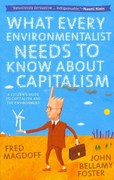Question
Suppose the economy begins at potential GDP with an inflation rate of 2 percent. Illustrate this situation in an AD/IA model. Suppose that an oil
Suppose the economy begins at potential GDP with an inflation rate of 2 percent. Illustrate this situation in an AD/IA model. Suppose that an oil price shock drives inflation up to 5 percent in the short run, but the central banks expects this inflation shock to be temporary. In other words, the FED thinks the inflation adjustment curve will shift back down to 2 percent next year. (Assume that the inflation adjustment curve does actually shift back to its original level the year after the oil price shock).
- If the FED maintains its original policy rule, i.e. doesn't change the parameters in the MP curve, where will real GDP be in the short run? How does the economy adjust back to its LR equilibrium at potential GDP?
- Suppose instead that the FED decides to hold the real interest rate constant. What happens to real GDP? What does the long run adjustment back to potential GDP look like in this case?
Suppose that this scenario describes the US economy in 2001. Which policy path should the FED follow?
Using the AD/IA model, explain what happens if the central bank reinflates the economy. Suppose the target inflation rate is changed from 2 percent to 5 percent.
- What is the impact on the major components of spending in the short run and in the long run?
- Mankiw assumes that consumption is a function of disposable income alone: C = C[Y-T]. Modify the consumption function to make consumption depend on both after tax income and the level of real money balances (M/P) consumers hold (The assumption is that real balances are a part of wealth, and wealth affects how much we consume).
- Show that if money demand (the demand for real balances) depends on the nominal rate of interest, then an increase in the rate of money growth now affects consumption, investment, and the real interest rate.
- What is the steady state in the Solow growth model? How is it reached from an initial situation in which the capital-labor ratio is below steady state?
- Politicians often argue for policies they think will raise the U.S. national savings rate (s). According to the Solow model, should a low saving rate be a matter of national concern? What policies might be implemented to raise it?
- Explain the roles of monetary and fiscal policy in causing and ending hyperinflations
- Why does the aggregate demand curve slope downwards? Explain.
Step by Step Solution
There are 3 Steps involved in it
Step: 1

Get Instant Access to Expert-Tailored Solutions
See step-by-step solutions with expert insights and AI powered tools for academic success
Step: 2

Step: 3

Ace Your Homework with AI
Get the answers you need in no time with our AI-driven, step-by-step assistance
Get Started


